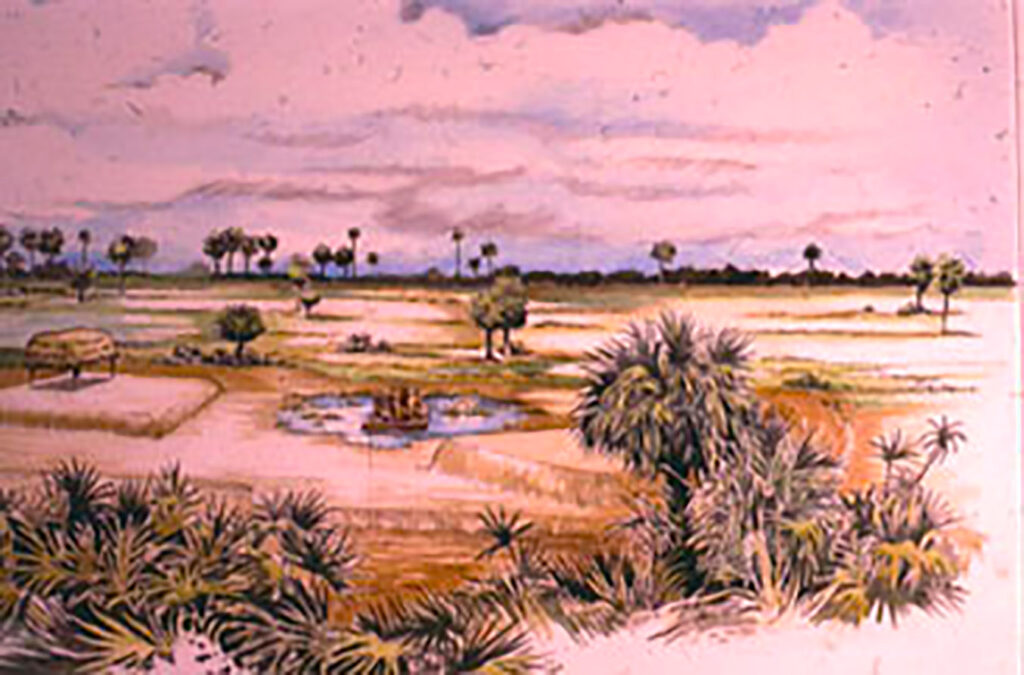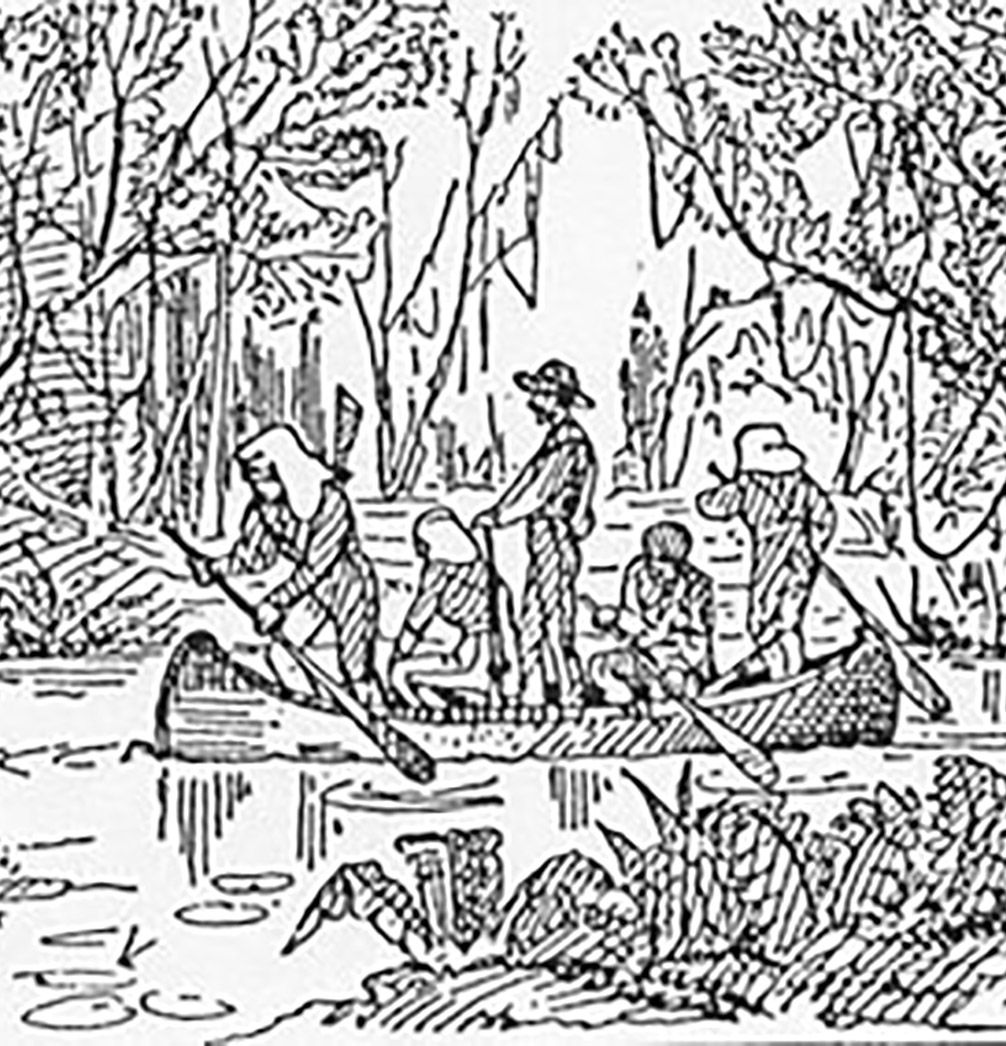2/24 A burn ban is currently in effect. No campfires, only charcoal & propane grills, due to high fire risk conditions.
The name Fisheating Creek is derived from the Creek Thlothlopopka-hatchee meaning “the creek where fish are eaten.” Early inhabitants, known as the Belle Glade people, began building mounds and other earthworks along the banks of Fisheating Creek between 1000 and 500 BCE. They subsisted by netting fish and harvesting turtles, snakes, and alligators. For these early people the Creek was also a canoe highway leading to Lake Okeechobee and its resources to the east and other settlements to the west.

The Fort Center site, located in the Wildlife Management Area (WMA) at the Banana Grove Road entrance off SR 78, consists of mounds, ponds, circular ditches and linear embankments. William Sears, director of the excavation and author of Fort Center: An Archeological Site in the Lake Okeechobee Basin, believes that corn pollen found in one of the three overlapping basins indicates that the Belle Glade people grew corn. If true, Fort Center would be one of the earliest examples of agriculture in the pre-Columbian Eastern United States.
At the site, bundles of human remains were found along with the remnants of a wooden platform decorated with wooden carvings of wildlife including life-size cats, a bear, foxes, eagles, wading birds and a wooden carving of an otter running with a fish in its mouth. The site, listed in the National Register of Historic Places, was still occupied when the Europeans arrived in the 16th and 17th centuries, although there was no evidence of agriculture.
During the Second Seminole War (1835-1842), a cabbage palm palisade at the Banana Grove Road site was named Fort Center for Lieutenant J.P. Center. Oscen Tustenuggee, who had organized many war parties, and his two bothers Micco Tustenuggee and Old Tustenuggee and their wives lived in villages along the Creek at the time.
The fort was reactivated at the start of the Third Seminole War in 1855. After the war in 1858, many Native Americans had been removed from Florida. In 1881, the federal government found 37 extended families living in and near Fisheating Creek. By 1930, cultivation of sugar cane, cattle ranching, and establishment of a refinery forced the remaining Seminoles to move from Fisheating Creek WMA.

Much of the land surrounding the Creek came to be owned by the Lykes Brothers. The Lykes empire began in the 1880s when Dr. Howell Tyson Lykes began exporting cattle to Cuba. All seven of his sons went into the family cattle or shipping business, and today Lykes Brothers Inc is the largest producer of cattle and the biggest meat packer in Florida.
The Lykes family prohibited development along the Creek and ran a campground and a canoeing concession at Palmdale. They closed the area in 1989, and following a protracted legal battle, the State of Florida purchased an 18,272 acre corridor along the Creek which became the Fisheating Creek Wildlife Management Area (WMA).
Today, the Fisheating Creek Outpost is operated by Cape Leisure Fisheating Creek, under a concession contract with the Florida Fish and Wildlife Conservation Commission.
Fisheating Creek Outpost is managed by
Cape Leisure Corporation for
Florida Fish and Wildlife Conservation Commission
Cape Leisure Corporation ©2022
location
863-675-5999
Fisheating Creek Outpost
7555 US Highway 27 North
Palmdale, FL 33944